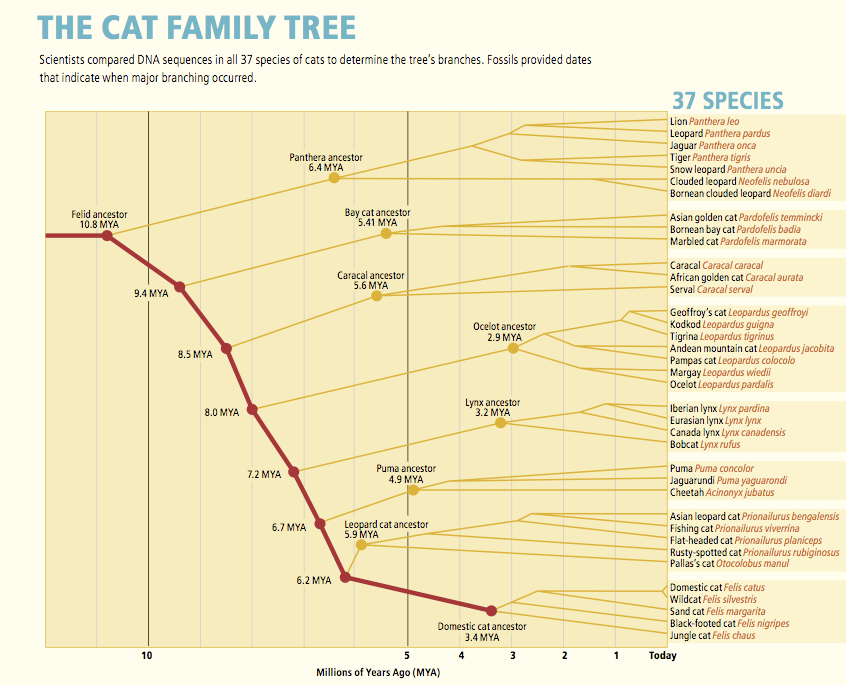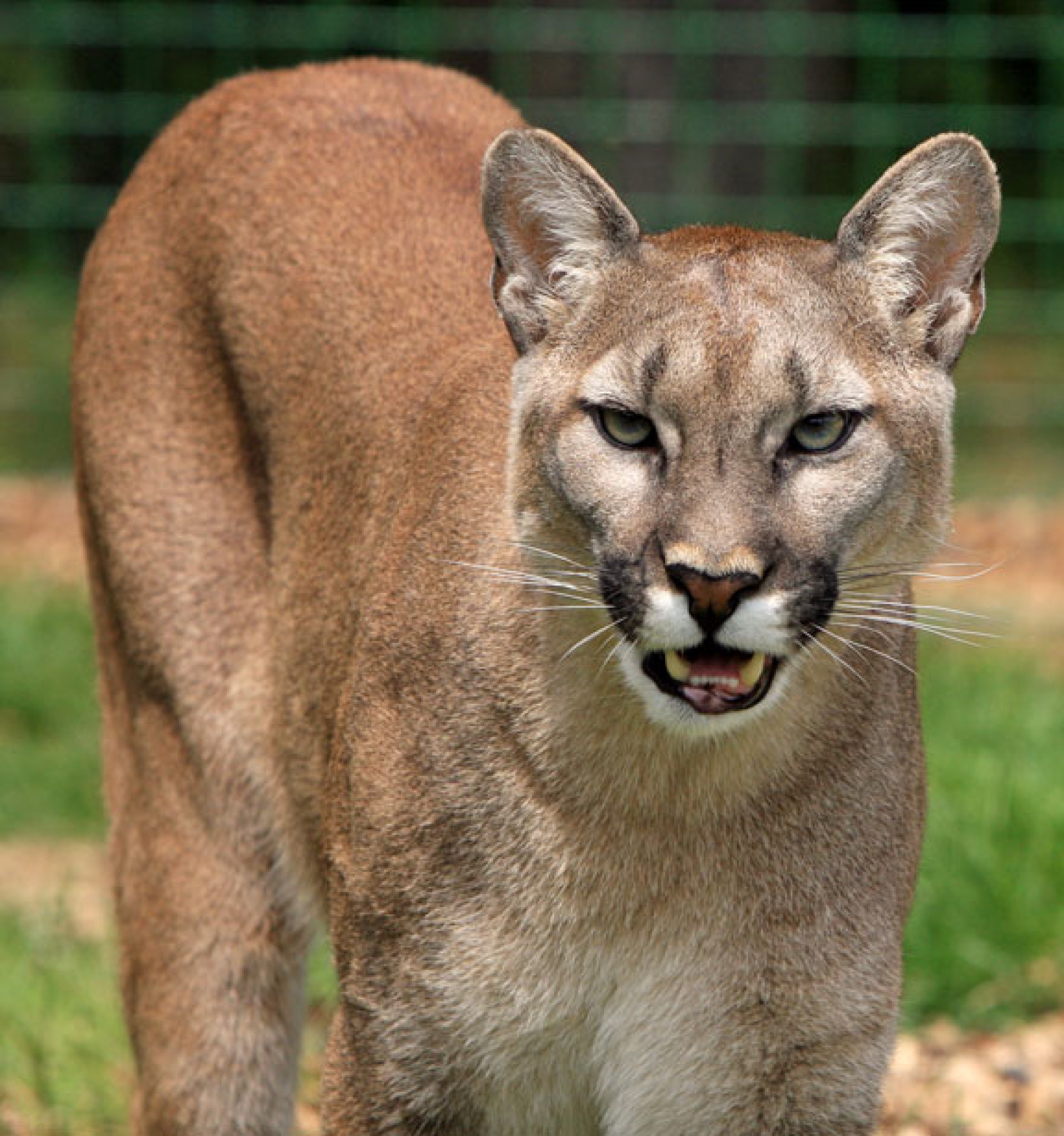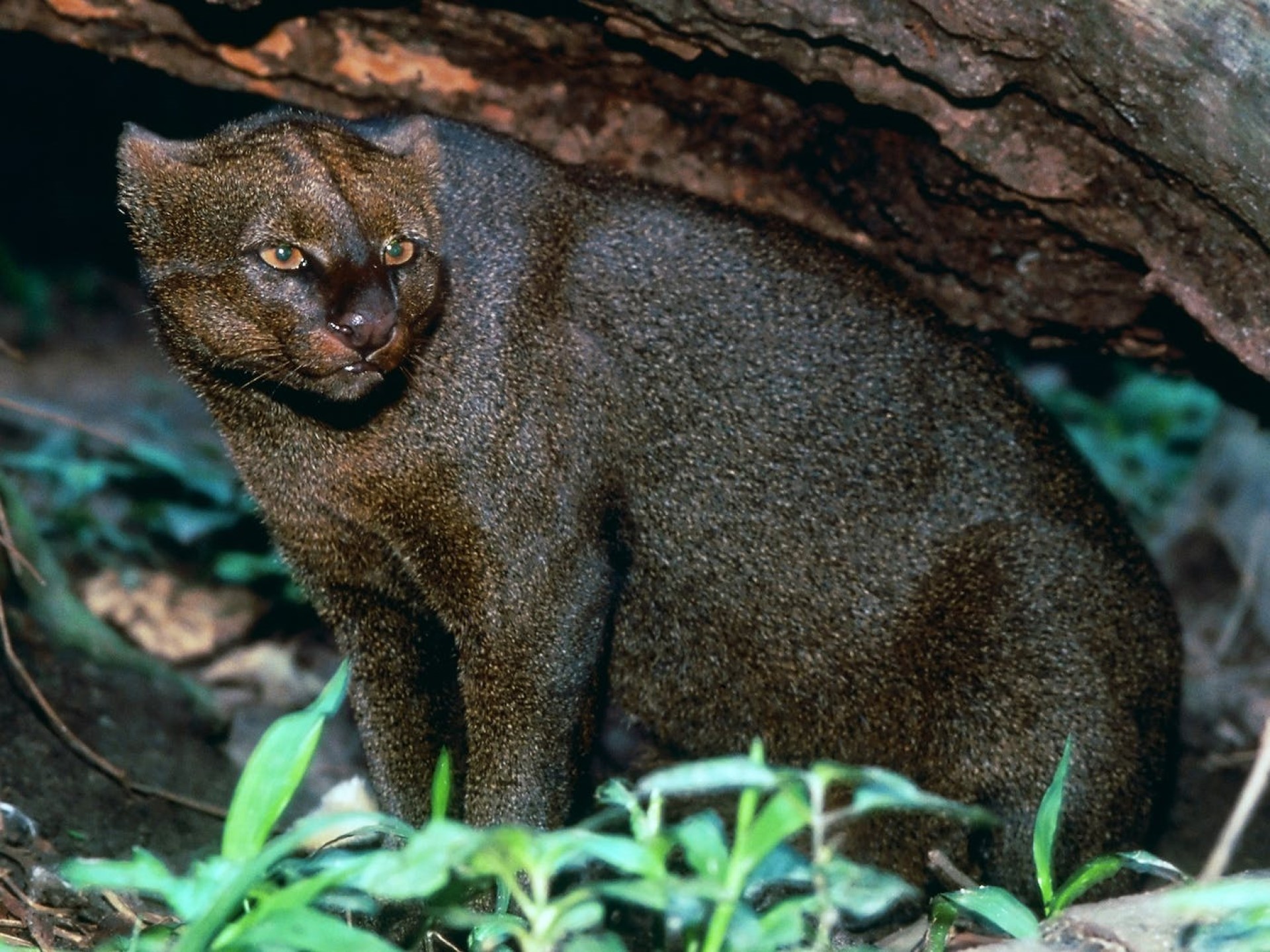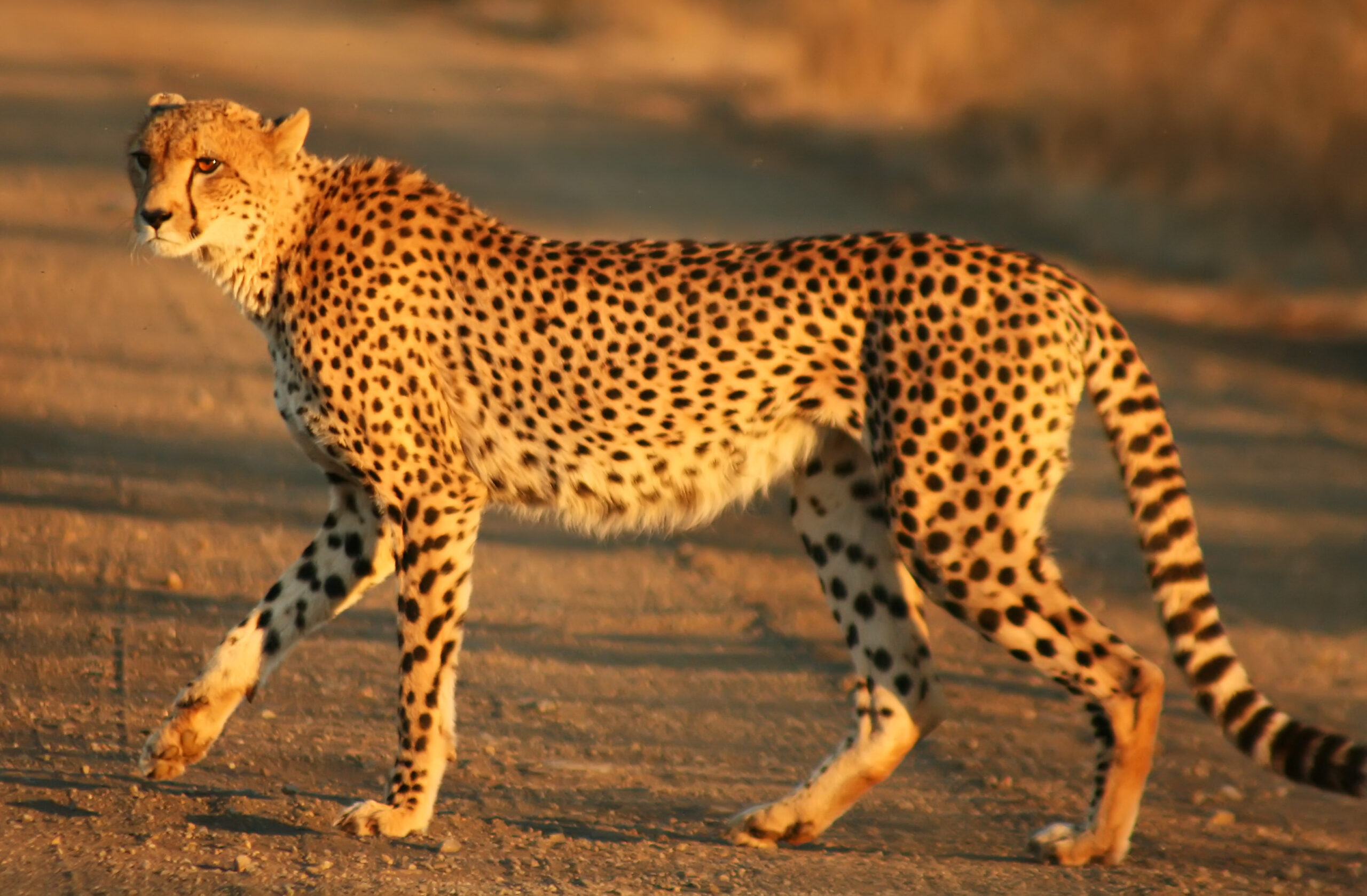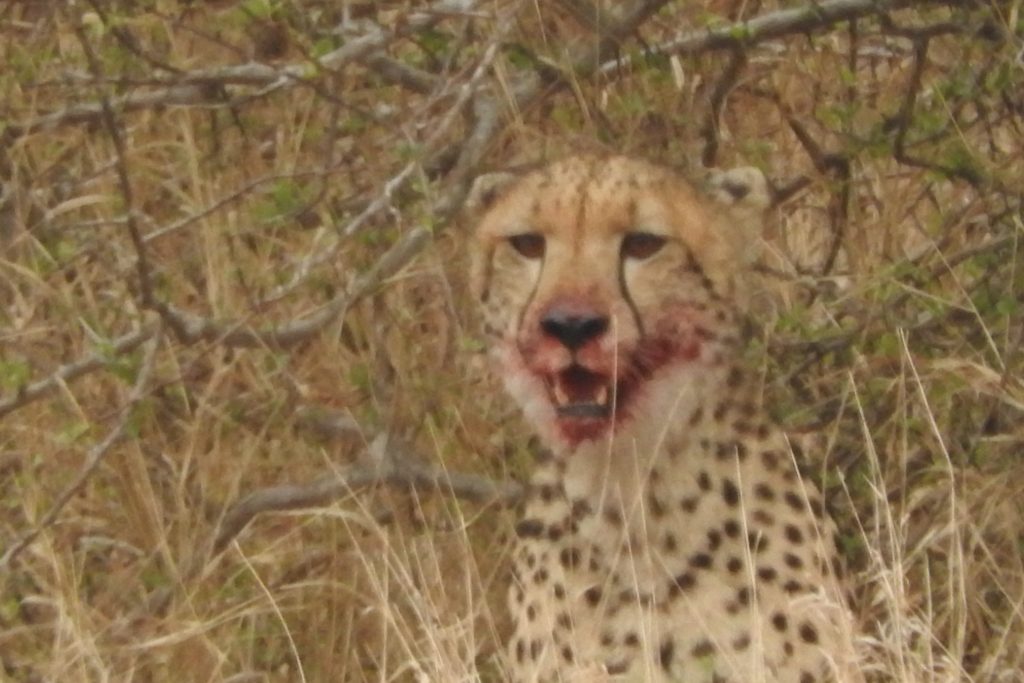The Cat (felidae) family tree
The Cats form an incredibly successful family. It is true that they are missing from the polar regions, and Australasia, but everywhere that they reached they have been successful, and in many ecosystems they are the undisputed kings
Panthera Family
This family split from hte Felid ancestor 10.8 million years ago. There have been some debate as to whether the two species of clouded leopards should be included in Panthera. On the circular mammal tree (which we are using – look in the species watch tab, or click here)
They are generally included in a subgenus Panthera_Neofilis
Bay cat Familiy
Bay cat ancestor split 9.4 milion years ago
Caracal Family
Caracal Ancestor split 8.5 million years ago
Ocelot Family
Ocelot Ancestor 2.9 million years ago
Lynx Family
Lynx Ancestor 3.2 million years ago
Puma Family
Puma ancestor 4.9 million years ago
Leopard cat Family
Leopard cat Ancestor 5.9 million year ago
Domestic cat Family
Domestic cat Ancestor
